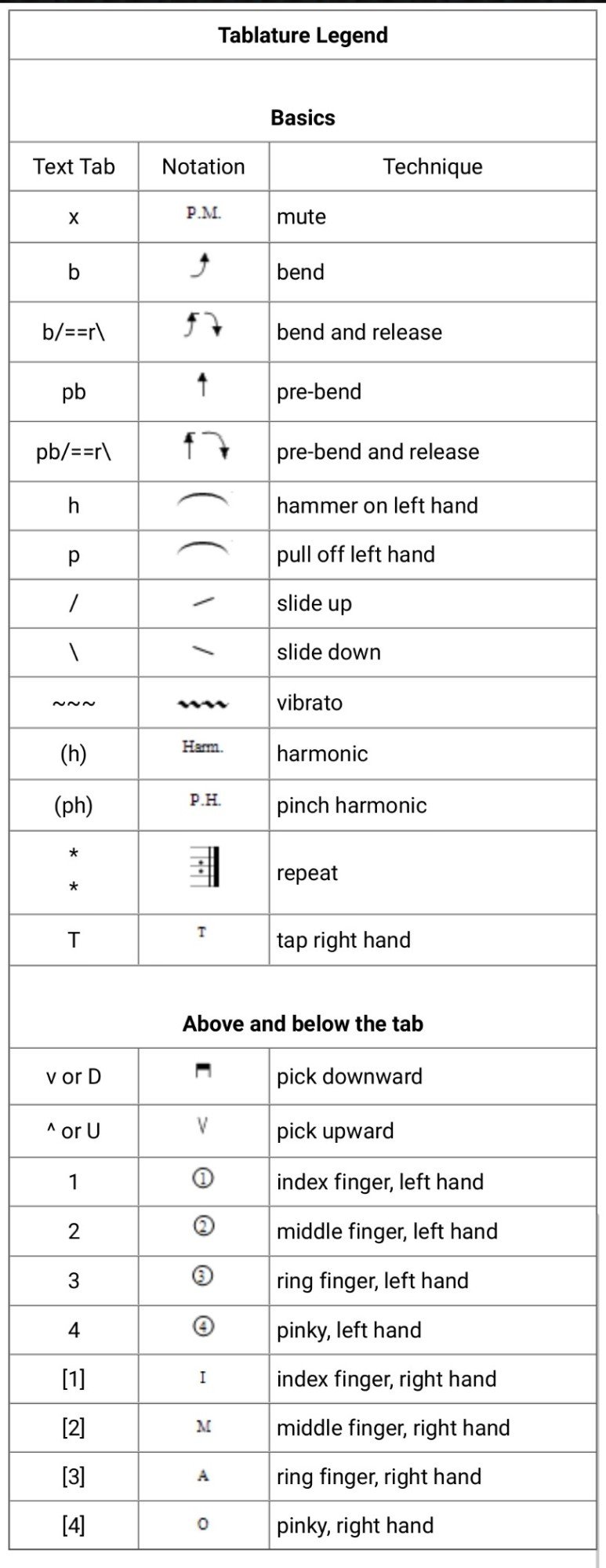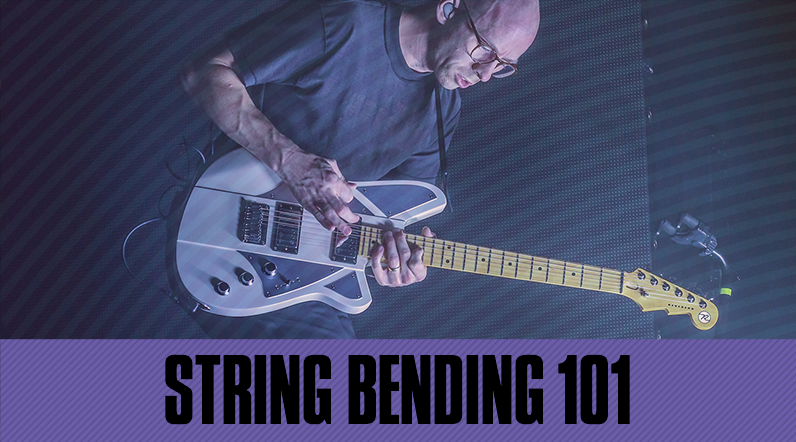Guitar tab symbols tell a guitar player what to do when reading guitar tablature.
The symbols may represent a bend, a palm mute, a hammer on, pull off, vibrato, and more.
Even if you do have a key for all of the guitar tab symbols, it may be confusing when it comes time to actually play a tab.
If you’re new to reading guitar tabs or new to taking guitar lessons, let’s break it down!
What Are Guitar Tabs?
Tabs are an easier way to play guitar music if you do not know how to read traditional sheet music.
This process is great for anyone taking beginner guitar lessons.
Guitar tabs are six lines that run from left to right.
The line at the bottom represents the 6th string, or the low E string, which is the thickest string on your guitar.
And from there, you may assume that the top-most line on a guitar tab is the high E string, or the 1st string, which is the thinnest string on your guitar.
Tabs are fairly straight forward but there are some symbols that are not often used.
Let’s take a look at a chart full of guitar tab symbols below.

So what does this all mean? Let’s take a look at an actual piece of music on a tab that incorporates a few of these techniques.
In Rock Level 2, Anders plays a lick that uses slides, bends, pre-bends, and vibrato.
These are the most common moves that a guitar player will use and will most likely be the majority of the symbols you will see in a guitar tab. 
Notice the tab is right below the musical notation, that is what we’ll focus on.
First the tab is asking for the guitar player to slide into the 14th fret note on the A string.
To do this, simply slide into that note, and then play the next three notes, which are standard notes you can pick.
The next part is where it gets really interesting.
Anders is playing a double bend, which means bending up at the 14th fret of the G string, and then sliding into another bend at the 16th fret of the same string, and then adding vibrato to the end of the note.
There is a lot to learn and practice in this lesson, so we recommend you take the tablature legend above and check out the rest of the lesson here.
As you can see, even on a single bar of music, a lot of movements are possible, and a lot of techniques are used, which is why it is so important to familiarize yourself with guitar tab symbols.
For more on how to read tabs, check out a great guitar tab tutorial here.

